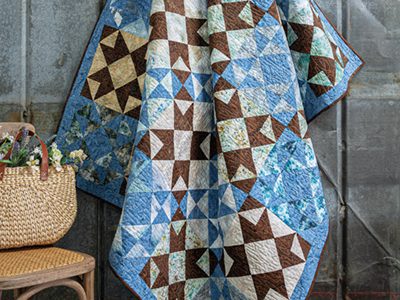
Kantha quilting is an age-old textile art form originating from Southeast Asia, particularly Bangladesh and Bengal. Rooted in tradition and culture, Kantha quilts serve both functional and aesthetic purposes, making them a fascinating craft to explore. In this comprehensive guide, we’ll delve deeper into the world of Kantha quilting, providing detailed steps, tips, and external resources to help beginners embark on their stitching journey.
Understanding Kantha Quilting
Origins and History
Kantha quilting has a rich cultural heritage, dating back centuries. Initially born out of necessity to repurpose old saris and garments, Kantha quilts evolved into intricate pieces of textile art. Traditionally, women would gather in communities to stitch layers of fabric together, often incorporating storytelling and personal narratives into their designs.
Characteristics of Kantha Quilts
Hand Embroidery: Kantha quilts are distinguished by their hand-stitched embroidery, typically using running stitches.
Layered Construction: Multiple layers of fabric, such as old saris or cotton cloth, are stacked and stitched together to create warmth and texture.
Artistic Expression: Kantha stitching allows for creative expression, with motifs ranging from geometric patterns to floral designs and narrative scenes.
Indian Kantha Quilting with Manjari Singh
Steps to Start Kantha Quilting
1. Gather Your Supplies
Fabric: Choose an assortment of fabric scraps or fat quarters for your quilt top. Opt for vibrant colors and patterns to add visual interest.
Thread: Select embroidery thread or Perle cotton in contrasting or complementary colors for your stitching.
Backing and Batting: Prepare backing fabric and batting to layer beneath your quilt top for added warmth and structure.
Needles, Scissors, and Hoop: Basic sewing tools such as needles, scissors, and a hoop (optional) will aid in the stitching process.
2. Plan Your Design
Sketch Your Design: Before stitching, sketch out your design on paper or directly onto your fabric. Consider the placement of motifs, patterns, and colors to achieve your desired aesthetic.
Experiment: Don’t be afraid to experiment with different designs and motifs. Kantha quilting is a versatile art form that encourages creativity and exploration.
3. Layer and Secure Your Fabrics
Layer Your Quilt: Stack your quilt top, batting, and backing fabric together, ensuring they are flat and smooth.
Secure Layers: Use basting spray or pins to secure the layers in place before stitching. This will prevent shifting and ensure even stitching.
4. Begin Stitching
Thread Your Needle: Thread your needle with embroidery thread or Perle cotton, and knot the end securely.
Start Stitching: Begin stitching your design using running stitches, working from one end to the other. Experiment with stitch length and spacing to create texture and visual interest.
5. Enjoy the Process
Embrace Imperfections: Kantha quilting celebrates imperfections and irregularities, so don’t worry about achieving perfect stitches. Enjoy the rhythmic motion of stitching and the therapeutic nature of the craft.
Embark on a journey of creativity and tradition with Kantha quilting. Whether you’re drawn to its cultural heritage or its therapeutic stitching process, Kantha quilting offers a rewarding experience for quilters of all levels. With this comprehensive guide and external resources, you’ll be well-equipped to start your Kantha quilting journey and create beautiful, meaningful pieces of textile art.
Start your Kantha quilting adventure today and discover the joy of stitching stories with every needle and thread.









Leave a Reply